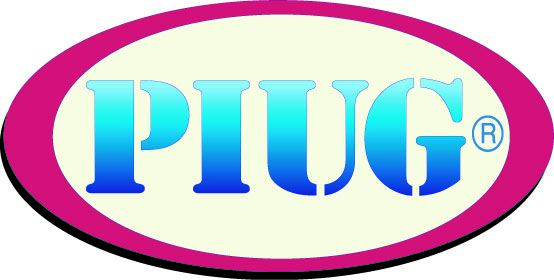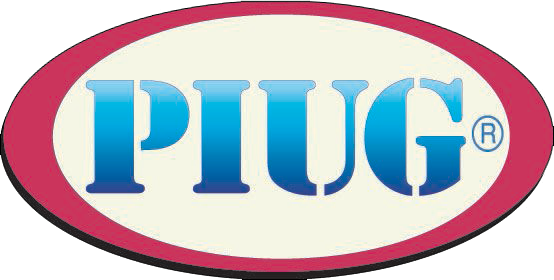WIPO TISC Program is offering a webinar " Overview of the WIPO Guide on Identifying Inventions in the Public Domain" July 16, 2020, 9:00 AM - 9:45 AM EDT (3:00- 3:45 PM CET)
Ever wondered how you can determine whether a new invention might be in the public domain and free to use without permission from a patent holder? This webinar will introduce the newly published Guide on Identifying Inventions in the Public Domain, which includes practical steps and tools for determining whether an invention might be in the public domain, and give you the opportunity to interact live with its lead author, Donna O. Perdue, Founder of Perdue IP Law, APC.
Join us if you want to find out how the Guide teaches deconstructing inventions, carrying out a freedom-to-operate search, reading patent claims, and much more!…
------
A cited Guide:
Identifying Inventions in The Public Domain. A Guide for Inventors and Entrepreneurs. WIPO. 2020. 112 p. (available online at https://www.wipo.int/publications/en/details.jsp?id=4501, or https://www.wipo.int/edocs/pubdocs/en/wipo_pub_1062.pdf )
This guide aims to assist researchers, inventors and entrepreneurs in determining whether specific inventions are protected by enforceable patents or may be in the public domain, by teaching a three-stage process for searching and analyzing published patent documents using the tools of freedom to operate determination.
This publication is a result of a project commissioned by the World Intellectual Property Organization (WIPO) Development Agenda Project on the Use of Information in the Public Domain for Economic Development. The lead subject matter expert was Donna O. Perdue, and the associate subject matter experts were Rose A. Mboya, Sarasija Padmanabhan and Isaac Rutenberg. [Two of the authors, Dr. Perdue and Dr. Rutenberg are U.S. patent attorneys, Dr. Padmanabhan (India) is a patent agent and an expert FTO searcher, Ms. Mboya is IP Officer, Kenya Industrial Research and Development Institute (KIRDI), Nairobi - ab]
Highlights of the WIPO Guide:
Summary: In general, FTO Search tools and legal status research described in the Guide are conventional search technique; the Guide is a useful basic guide for FTO searching. There are few sections of the Guide which appear to be offer a different perspectives on FTO search – they are quote below. Firstly, Module II recommends to a researcher to draft independent and dependent "patent-style claims" describing invention with essential only features and with optional features (Sec. II.3.3, p. 38 and Annex A, p.103, Example 7, p.39 is attached to this post; See, however Wolff T. (2018) [1]). Secondly, Module III "FTO Search", Sec. III. 2. describes a Invention Deconstruction framework/technique for design a query to uncover dominant patents and for query expansion (p.42-46, with examples within). Finally, Module IV "FTO analysis", Sec. III.3 and III.4 (p.67-84) lays out framework and give examples [see attached Ex. 17, p.79] of two-step infringement analysis which includes claims construction (interpretation) of claims from relevant patents from FTO search and comparison of “each interpreted (construed) claim with the client’s invention”. Also, there are number disclaimers within the Guide which point out that the Guide teaches informal FTO analysis which speaks on likelihood that a particular claim may read on invention, and not discusses infringement (see p. 89, Helpful Hints). [ab]
Module II Identifying technology information needs (p.29)
Learning points: …Carry out a follow-on analysis to identify invention features and draft patent-style claims that recite the essential features of the invention.
II. 2.1 Technical information (p.30-33)
[Strategic Interview questions]
Question 1: Overview of the invention and problem to be solved
Question 3: Identify essential features of the invention (features that is required for the invention to work; can be a component, a step, a combination of a step that uses a component, a function that is not limited to a specific combination of steps and components, or similar.)
Question 4: Identify optional features of the invention
Question 5: Identify functional features of the invention (function or an intended result that is described without reference to specific components and/or steps; explore structure-function relationships to identify ways to implement these features)
Question 6: Identify significant limits and critical values (limits on field of invention, limits on components, steps or features; Negative limits or exclusions for features that are not part of the invention)
II. 3.3 Summary Report Part C. Additional analysis (p.38)
Optional but recommended: Draft patent-style claims to describe the invention
For a process claim:
A [type of invention] for [purpose of the invention, or main technical effect], comprising: [list components that are required for the invention to work],
wherein [describe each required step and the components used in that step, in order of occurrence, including any significant limits or critical values, and any functional features that are essential].
Teaching Example 7: Gathering information and drafting patent-style claims (p.39, attached)
From Annex A. Module II Checklist (p.100)
Summary Report Part C. Additional analysis
Optional: Draft patent-style claims to describe the invention (p.101)
· At least one broad independent claim that describes the invention in terms of all of its essential features.
· Optional: Narrower dependent claims that recite optional features as additional claim limitations; a “picture claim” that recites the components and steps exactly as the client practices the invention.
[also at p.94 “Finally, as recommended in Module II, try to draft patent-style claims to describe the invention as if you were seeking patent protection for the invention. This should help you identify the essential features of the invention, which will help you deconstruct the invention in the FTO search stage.”]
(p.114) Refs. WIPO Patent Drafting Manual (2007): www.wipo.int/publications/en/details.jsp?id=297
Module III FTO search: Finding sources of information to identify inventions in the public domain and carrying out an FTO search (p.41)
This module includes a section (III.2) which teaches Invention Deconstruction technique for [further] query design to uncover dominant patents.. Principles of deconstruction include: identification of all essential features [absolutely necessary to accomplish function of the invention, each searched separately]; generalization of features to broader concepts(“operative features”) or components of steps that perform the similar function; Use of high level or non-specific language with understanding when to stop deconstruction. Decoupling components from invention steps; Decoupling each step (process) from every other step of the invention, including composite steps. Deconstructing functional features exploring structure-function relationships. (p.42-44)
Structural expansion and functional keywords (beyond synonyms): ([in composition] aspirin-> hydrobenzoic acids & aspirin-> analgesics), etc. (p.44-46)
Module IV FTO analysis: Reading claims and legal status information (p.65)
FTO analysis … includes (1) “Infringement analysis to: interpret (construe) the meaning and scope of claims in patent documents; compare each interpreted (construed) claim with the client’s invention; determine whether every claim limitation (element) might be found in the client’s invention; evaluate whether the claim could be interpreted to cover (read on) the client’s invention” (and (2) [conventional] Legal status determination) (p.66)
[Disclaimers] “FTO analysis is often carried out by a licensed professional such as an attorney or a non-attorney patent professional. …“In contrast, this guide teaches you the use of FTO tools to apply general principles of FTO analysis [“canons of claim construction”] to generate technical findings, which are communicated in a Final Report.” (p.66)
“You must inform your client that your Final Report communicates technical findings based on your informal FTO analysis of potentially relevant patent documents, and is not a legal opinion.” (p.66)
Sec.IV.3 discuses claim structure (preamble, transition phrases (comprising, consisting of and consisting essentially of), limitations; independent/dependent claims, product, process and product-by-process claims (and their scope of protection), “Swiss-style claim”, “use” or “method of use” claims, where applicable. (p.67-72)
Sec. IV.4 is concerned an infringement analysis defined as a two-step process discussed in Sec. IV.4.1 & IV.4.2 below.
Sec. IV.4.1 on claim construction, discusses mandatory [intrinsic] and optional [extrinsic] sources of claim construction and consideration on “doctrine of equivalents. [Mandatory sources is defined to include claim language [in plain meaning], specification [“patentee can be their own lexicographer”], file history and prosecution estoppel, litigation records. Extrinsic sources, applicable when mandatory sources insufficient, includes dictionaries, prior art references, etc.]. Examples of claim construction are given in Tables on p. 79-80, Teaching Examples 17 &18 for product and process claims. (p.72-76)
Sec.IV.4.2 is on comparison [as a whole] of construed claims with the client’s invention [as a whole]. It is defined that then the claim would “cover” (“read on”) the product or process… if “corresponding element” or “corresponding structure” in your client’s invention could be found for every the limitations of the claim. Results of analysis is recommended to present in a chart (Fig.4) (p.72-77)
Figure 4: Setting up and completing a claim chart (p.77)
|
Claim limitation
|
[Paste in the claim, word for word from the original. Break up the claim into preamble, transition and limitations. Each limitation is given a separate row. Limitations are typically, although not always, separated by semicolons.]
|
|
Claim construction
|
[This column allows you to enter notes and comments. These notes should help you understand the scope of the preamble, the transition and each claim limitation.]
|
|
Corresponding structure in client’s invention
|
[Anything from the client’s invention that might fall within the scope of what is recited in the corresponding part of the claim, in particular each claim limitation, is placed in this column. Include explanations if necessary.]
|
|
Limitation satisfied?
|
[Try to draw a conclusion (with explanatory notes if necessary) as to whether, or to what extent, the claim limitation is satisfied.]
|
|
Optional (recommended) conclusion section as to whether the claim could cover the client’s invention.
|
Teaching Examples 17 [attached] 18 and 19 at pp, 79-80, 82 illustrate claim charts for product, process and use claims.
Sec.IV.7 Final report… Helpful hints: .. conclusions from informal FTO analysis should be expressed in terms of the likelihood that a claim could or might be interpreted by experts to cover (read on) the client’s planned use of the invention… (p.89)
Footnote: [1] Wolff, T. (2018) ‘Freedom-to-Operate Search Strategy: Hitting the Target’, Online Searcher, August, pp. 31–42., at p. 34-35 http://www.infotoday.com/OnlineSearcher/Articles/Features/FreedomtoOperate-Search-Strategy-Hitting-the-Target-126169.shtml(“The next step is to draft a claim, for search purposes only, that would provide protection for its inventor and exclude your client from manufacturing, using, or selling this formulation:” Claim: A composition for treating human hair comprising an aqueous suspension of a metal salt of pyrithione, an anti-fungal agent, either climbazole or ciclopirixolamine, and optional agents selected from suspension maintaining agents, conditioning agents, cleansing agents, foaming agents, preservatives, colo-rants, and fragrances”) [ab]
 Search
Search Community
Community Job Board
Job Board
